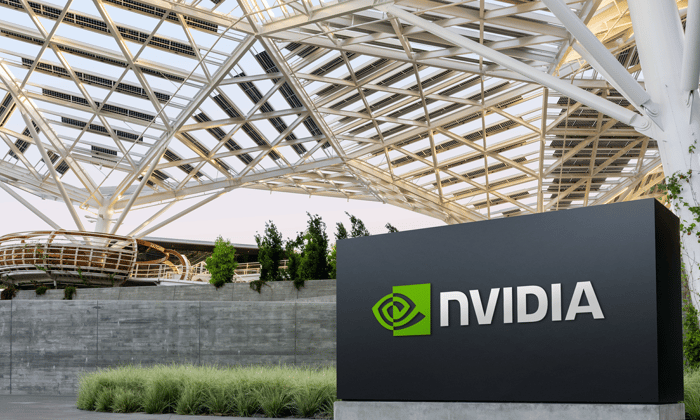Stan Druckenmiller made a lot of money investing in Nvidia (NVDA 1.75%), but he's finally taken some of his profits off the table.
The former hedge fund manager and George Soros lieutenant first invested in Nvidia for his portfolio at his Duquesne Family Office in late 2022. He added a significant amount to his position following the launch of OpenAI's ChatGPT on Nov. 30 of that year. He continued building up his position almost every quarter in 2023, with the stock and call options representing over 16% of his portfolio as of the end of the year.
At that point, he'd invested nearly $550 million in the artificial intelligence (AI) chip leader. That big bet continued to pay off in early 2024 as Nvidia stock climbed higher. But as the share price topped $900, Druckenmiller noted in an interview with CNBC, "A lot of what we recognized has become recognized by the marketplace now."
As such, he sold some of his shares and all of his call options. He ended the first quarter with just $159 million worth of Nvidia stock, cutting his position by roughly 84%. Druckenmiller's Nvidia stake helped increase his portfolio value by more than $1 billion in the first quarter alone, up from about $3.4 billion at the end of 2023.
But now, he's onto the next investment. And it's a big one.

Image source: Nvidia.
Betting big on small caps
As of the end of the first quarter, Druckenmiller's biggest position was call options on the iShares Russell 2000 ETF (IWM -1.59%). He held about $664 million worth of options as of the end of March.
The iShares Russell 2000 ETF is a simple index fund that tracks the Russell 2000, which consists of the 2,000 smallest companies in the Russell 3000. It's the most commonly used index to track small-cap stocks.
Small-cap stocks have lagged behind their larger peers. As megacaps like Nvidia and the rest of the "Magnificent Seven" fueled overall stock market returns over the past year and a half, small caps have, for the most part, languished.
The Russell 2000 has yet to surpass the all-time high it reached back in 2021. It's still 14% below that level. Meanwhile, the S&P 500 zoomed past its previous high in January and has continued climbing higher this year.
There are good reasons why small caps have lagged the overall market.
First and foremost, smaller companies are more sensitive to interest rates than larger enterprises. Companies in the Russell 2000 hold a total of $832 billion of debt, 75% of which needs to be refinanced by 2029, according to a report from Bloomberg. By comparison, just 50% of debt obligations from companies in the S&P 500 are due by then.
Smaller businesses are also more likely to take on floating-rate debt instead of issuing fixed-rate bonds. As a result, small companies have been beaten down in this high interest rate environment.
Additionally, small-cap stocks are more sensitive to economic downturns. It's easier for a large company to survive a recession than a small one. And as recession fears increased in 2022 and 2023, small-cap stocks felt the pain.
But we appear to be turning a corner on both fronts. The Federal Reserve expects to start cutting interest rates later this year. Meanwhile, hopes of a soft landing -- i.e., avoiding a recession -- are increasing. That could be welcome news for small-cap investors, and Druckenmiller now counts himself among them.
The case for investing in small caps now
Despite their subpar performance over the last few years, small caps historically outperform in the long run. The reason is that smaller companies' stocks demand a greater risk premium because they're more likely to face hardships amid economic downturns or changes in their industry.
After a long period of underperformance, the valuation gap between small and large caps is at one of the lowest levels it's seen in decades. The price-to-sales ratio of the Russell 2000 is less than half that of the S&P 500. The forward price-to-earnings ratio of the small-cap S&P 600 index (which only tracks profitable businesses) is 30% lower than the S&P 500. These are levels not seen since the early 2000s.
The last time the gap was this wide, small-cap stocks went on to outperform large-cap stocks for the next few years.
Investors looking to follow Druckenmiller's lead could invest in the iShares Russell 2000 ETF. However, you may be better off focusing exclusively on small-cap value stocks. Or better yet, profitable small-cap value stocks. Small-cap value has historically been the best-performing segment of the market, while small growth stocks have, as a group, been the worst performing. As such, an index fund like the Vanguard S&P Small-Cap 600 Value ETF (VIOV -1.30%) or the actively managed Avantis U.S. Small Cap Value ETF (AVUV -1.87%) could be a better bet.
Druckenmiller thinks the outlook for small caps is good either way. And there are a lot of signals that he's right. Adding a small-cap tilt to your portfolio now seems like a smart idea, and an ETF is the easiest way to do it.





